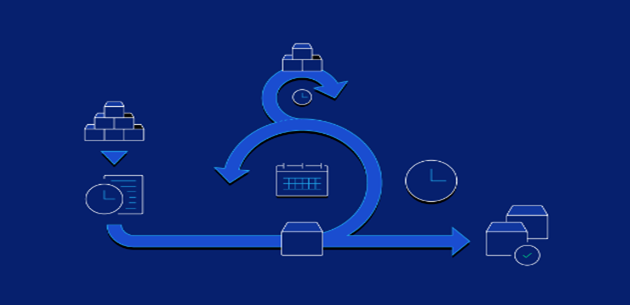Agile project management is a popular approach to software development that emphasizes flexibility, collaboration, and client input. It does, however, provide some issues in terms of managing timelines and assuring quality, especially when needs change regularly.
Understanding Quality Management in Agile Projects is important since high-quality, functional software is one of the agile’s most significant advantages. Working software must function correctly and fulfil the consumers’ expectations of value. Even app development nyc companies seem to be adopting and embracing a no-silo work culture. Still, when a vendor or an external partner enters the scene, work is transacted in a waterfall method.
Technically, your organisations is the customer in this environment, and the third value of the agile software development manifesto fosters customer collaboration.
In this article, we will discuss the following tips to ensure quality in an Agile app development project.
WHAT IS AGILE?
Agile is a project methodology that focuses on flexibility, autonomy, and collaboration. The purpose of agile is to create continually integrated and delivered products while preserving quality.

Here are the four Agile tenets as stated in The Agile Manifesto:
- “Personalities and interactions with processes and tools”
- “Working products over detailed documentation”
- “Customer involvement over contract negotiation”
- “Responding to change by following a plan.”
Here are the following tips to help you ensure quality in an Agile app development project:

1. Define Quality Criteria
Quality is not a subjective or ambiguous notion. It is a measurable and provable component of your software product that represents its value, usefulness, and dependability. To maintain quality in an agile project, explicit and thorough quality criteria must be specified for each user story, sprint, or feature.
These criteria should be consistent with the customer’s expectations, industry standards, and project goals. You should also convey these criteria to your team and app development NYC company and use them to guide your testing, review, and feedback procedures.
2. Sprint Burn
Sprint burndown tracks the completion of tasks during a sprint. It can be assessed in tale points or hours of labour.
When using this indicator, keep an eye out for patterns in completing early or late. Consistently early completion times can indicate that your team is not putting in enough effort. Consistently being late might indicate that you have taken on too much work or have not adequately planned for potential roadblocks. If you observe significant reductions in your burndown graphs, it means you’re not correctly breaking down tasks.
3. Plan and Budget Realistically
Even though agile projects are more flexible and adaptive than typical waterfall projects, planning and estimates are still necessary. To keep timelines and quality in an agile project, you must plan and estimate realistically depending on the velocity, availability, and capacity of your team.
In your planning and estimating process, you should also account for ambiguity, complexity, and change and use tools such as story points, range estimation or relative sizing. Furthermore, you should update your plan and estimate on a frequent basis depending on your feedback, changes communicated, and actual progress to your stakeholders and team.
4. Epic and Release Burndown
Epic and release burndown metrics measure your development progress over numerous sprints. These metrics give information about the amount of work you do throughout each iteration.
Epic and release burndown can assist you in uncovering severe scope creep if they show that your proportion of work done does not increase throughout an epic.
When using these metrics, keep an eye out for epic or release estimates that need to be updated between sprints. These metrics will only be rendered helpful if they are updated. If you see scope creep, it might be due to the product owner needing to understand the product’s goals.
5. Test and Integrate Continuously
In an agile project, testing and integration are not discrete or final procedures. They are continuous and necessary operations that ensure the quality and functionality of your software product. To maintain quality and timeliness in an agile project, you must continuously test and integrate throughout the development cycle. Tools and practises such as test-driven development, automated testing, pair programming, code review, and continuous integration and delivery should also be used.
6. Escaped Defects
Escaped defects metrics count the number of errors that affect users in production. It can signify software quality and worth. Ideally, this measure should be zero, but practically, your goal should be to maintain it as low as feasible.
When combined with defect density, the quantity of escaped defects becomes more valuable. The defect density is the number of flaws per line of code. This combination can offer you an indication of how trustworthy your project is, to begin with, as well as highlight improper coding practices.
7. Collaborate and Communicate Effectively
Agile project management is founded on the principles of collaboration and communication. They promote transparency, alignment and trust among your team members, customers, and stakeholders. To ensure quality and timeliness in an agile project, you must work collaboratively and effectively with all app development nyc firms involved.
Methods and outlets such as sprint reviews, demos, daily stand-ups, feedback sessions, and retrospectives should also be used. These approaches and channels may assist you in communicating ideas, information, and feedback quickly and efficiently, managing challenges and disagreements, and adapting to changes.
8. Learn and Improve Continuously
Agile project management’s primary outcomes are learning and improvement. They allow you ou to give value, satisfaction, and quality to your clients while simultaneously developing and increasing the skills, knowledge, and performance of your staff. Maintaining timeliness and quality in an agile project requires you to continually learn and improve based on your experience, feedback, and outcomes.
It would be beneficial to include measurements and indicators such as delivery rate, customer satisfaction, cycle time and defect rate. These indicators can help you identify your strengths and weaknesses, track and analyses your quality and deadline performance, and make improvements.
Conclusion
It is critical in agile to maintain quality when delivering software or a product. The development team should collaborate to generate high-quality, fully functional, shippable software in each iteration. Quality may be achieved in agile methods by constant communication between the entire team and the client. This approach to quality management in agile methodology is quite different from the old technique.


